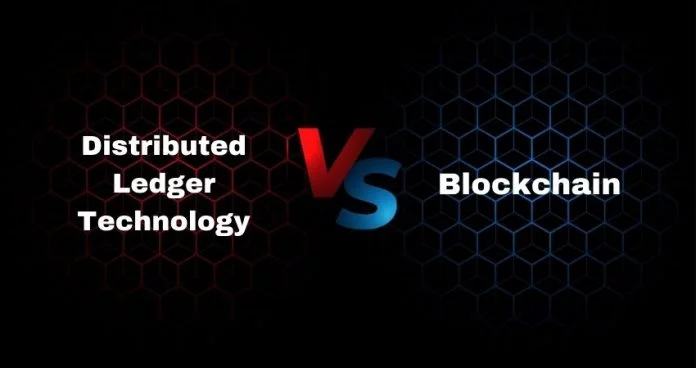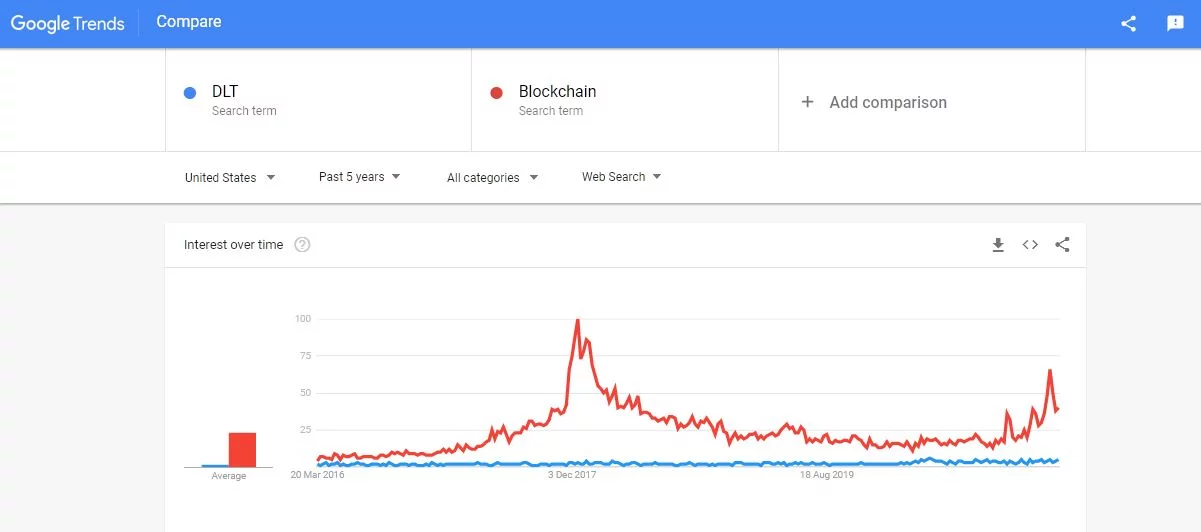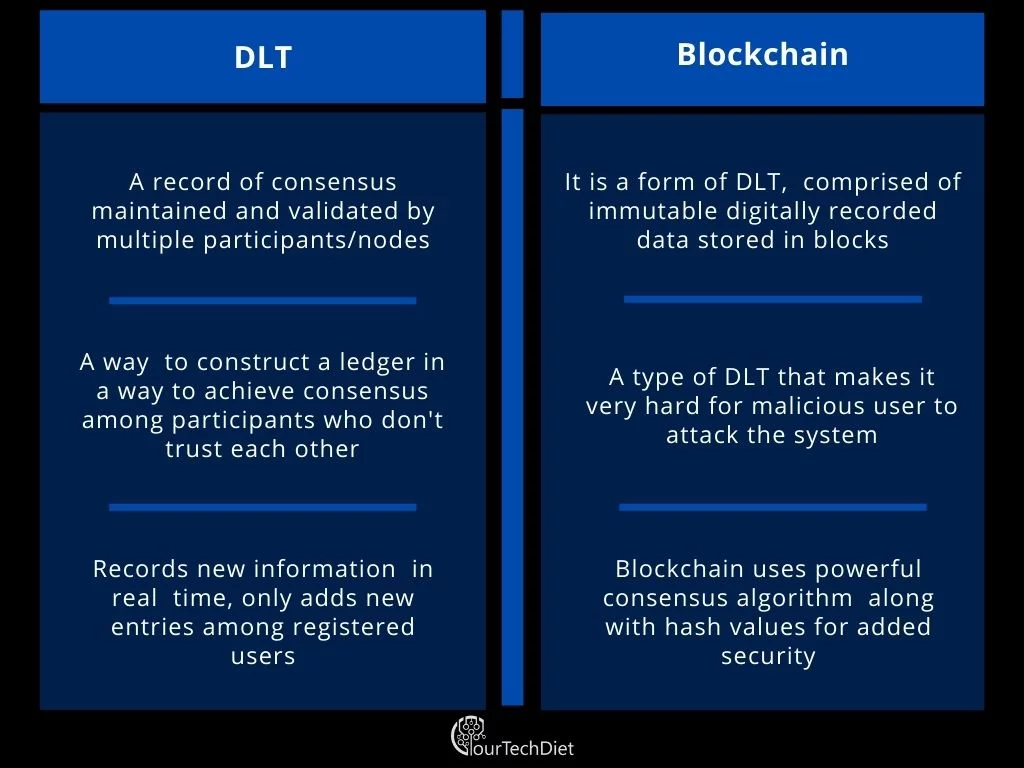We are currently living in a digital era of tech slang and technology idioms. This is an era where even the most complex technological tools to understand the difference between Distributed Ledger and programs are reduced to four words or less.
Due to this, we are coming across a rise in witty and intelligent businesses attempting to profit from the current crypto boom. Even now, some businesses are doing it by rebranding with ‘blockchain’ in their company name.
It is noted that utilizing such tech jargon as “blockchain technology” to lure future investment will only deliver limited benefits.
It is amusing to notice that these types of business strategies are the reason for branding problems for various technologies. It is the leading reason why many are wary or unaware of the reality of blockchain.
In recent times, tech trends suggest that distributed ledgers add practicality and significant outcomes without the need for publicity.
The question arises, “Are blockchain and distributed ledger technology the same?” The answer is No. This is the primary common misconception that many people have.
This article will explore the comparison between distributed ledger technology and blockchain, along with its features and advantages.
Distributed Ledger Technology vs. Blockchain: Which is more popular?
From the above Google Trends screenshot, one can evaluate that Blockchain is way ahead of DLT in terms of customer preferences.
Distributed Ledger Technology vs. Blockchain: Difference across Parameters
DLT is a localized database that many participants across several nodes handle; blockchain is considered a type of DLT where transactions are noted down with an unchangeable cryptographic signature called a ‘hash.’
The transactions are then clubbed together in blocks, and every new block includes a hash value of the previous block. Thereby binding all the blocks together. Hence, distributed ledgers or DLTs are often called blockchains.
Blockchain has received a lot of attention in recent times because of Bitcoin, Ethereum, and other cryptocurrencies. However, distributed ledgers didn’t gain the same popularity level.
A DLT is simply a DBMS that exists across several sites or among many participants.
Most organizations use one parent database that exists in one location, which can pose a risk. However, a distributed ledger removes external third parties from the database. This makes the whole process quite efficient.
Blockchain technology allows all those involved in a particular transaction to understand with proof what happened and when it happened.
Confirmation to other third parties is seen as the same thing without an intermediary’s interference. Thereby providing a guarantee without a need to share and restore data afterward.
The two terms “blockchain” and “Distributed Ledger Technology” are often used synonymously. To understand blockchain, it’s essential to understand the latter along with the framework that forms the foundation of it.
The blockchain is only just a sub-class of a distributed ledger. You can consider DLT as the umbrella technology of blockchain. Yet, in recent times blockchain became more famous than the whole notion of distributed ledger technology.
But, many programmers and IT professionals are trying to come out of the blockchain umbrella. Hence, people are anxious to know about the differences between blockchain and distributed ledger technology.
The blockchain is the subset of distributed ledger technology where every node or block gets its copy from the ledger.
Every time a user adds new data to the transaction, all the hash values in the ledger get updated. All the transactions, along with their details, are ciphered before being added to the ledger.
Both technologies sound similar, but there are a few differences as well. One can acknowledge that DLT is the super-class of blockchain or blockchain as an extended category of the distributed ledger.
Simply put, the blockchain is one of the types of distributed ledger technology. However, vice-versa is not valid, i.e., you cannot say all distributed ledger technologies are called the blockchain.
Here are some unique features of blockchain, but they might not exist in other distributed ledger systems. The following points will help you understand the blockchain and the distributed ledger technology comparison.
-
Block Structure
The first difference between blockchain vs. DLT is the structure itself. Blockchain, as the name itself, contains blocks of data. This structure is not a simple data structure, like in computer science terms of distributed ledgers. A distributed ledger is simply a database laid out across different nodes. But you can showcase this data or information in various ways in every ledger.
-
Sequence of Blocks
In the blockchain, one can find all the blocks in a specific sequence. In comparison, Distributed ledgers do not need a particular series of data. This sequence of blocks in DLT makes blockchain vary from any other distributed ledger technology.
-
Proof of Work or Powerful Consensus Algorithm
Understanding the difference between Distributed Ledger blockchain and DLT is the powerful concord algorithms. In most cases, there is usually a wide usage of proof-of-work operation. However, there are also other operations and algorithms, but in the end, they also use lots of power.
A distributed ledger offers all its data and transactions in the database to the participants, thereby promoting transparency.
They can reduce the transaction time to seconds and are processed every day, saving businesses millions of dollars. DL technology also facilitates increased back-office productivity and automation.
DLT uses blockchain, which is extremely useful for financial transactions. They reduce operational ineffectiveness(which ultimately is cost-friendly).
Greater security is achieved due to localized structure and the fact that the ledgers are fixed in one location.
Furthermore, blockchain offers a way to safely and excellently create a sensitive activity log without any external interference.
This comprises anything from international financial transactions to stakeholder records. Financial operations or actions are upgraded to offer organizations a safer, digital alternative. That is way better than third-party Bitcoin dealer companies.
One can use DLT or understand the difference between Distributed Ledger blockchain by avoiding these often diplomatic, tedious, documented, and costly processes.
When you add data to a blockchain, it gets recorded on the network. When you have a chain of transactions over time, you gain a precise and non-changeable audit trail.
Conclusion
To conclude, blockchain is a type of distributed ledger technology. It was designed to record transactions or digital relations. This brings much-needed clarity, productivity, and extra security to the organization.
But these two technologies are not the same; blockchain is simply the tip of the familiar iceberg called DLT. One cannot differ them thoroughly as they go hand-in-hand with each other.
Recommended For You:



